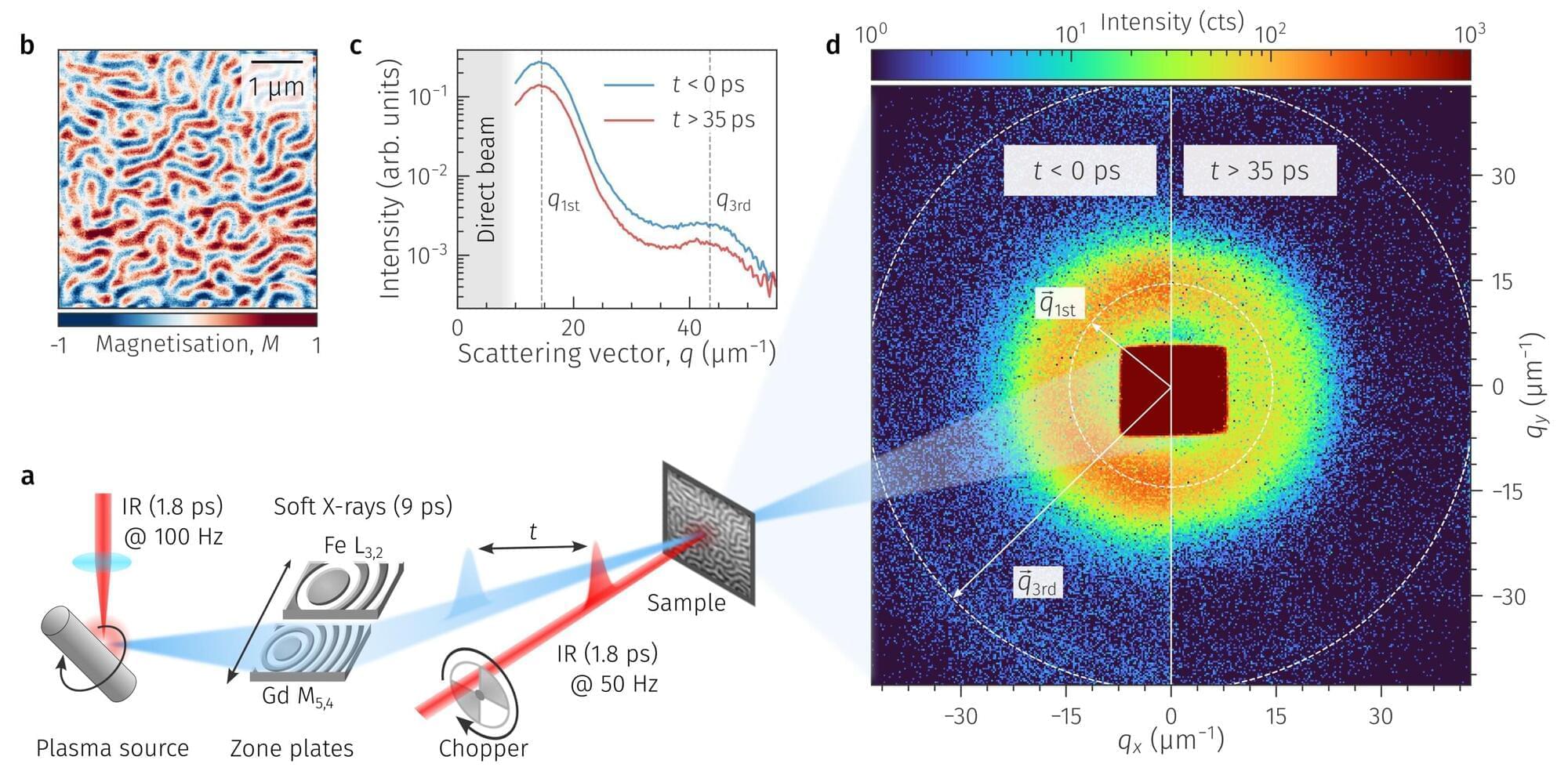Scientists at the Max Born Institute have developed a new soft X-ray instrument that can reveal dynamics of magnetic domains on nanometer length and picosecond time scales. By bringing capabilities once exclusive to X-ray free-electron lasers into the laboratory, the work paves the way for routine investigations of ultrafast processes of emergent textures in magnetic materials and beyond.
A dropped fridge magnet offers a simple glimpse into a complex physical phenomenon: although it appears undamaged on the outside, its holding force can weaken because its internal magnetic structure has reorganized into countless tiny regions with opposing magnetization, so-called magnetic domains.
These nanoscale textures are central to modern magnetism research, but observing them at very short time scales has long required access to large-scale X-ray free-electron laser (XFEL) facilities.








